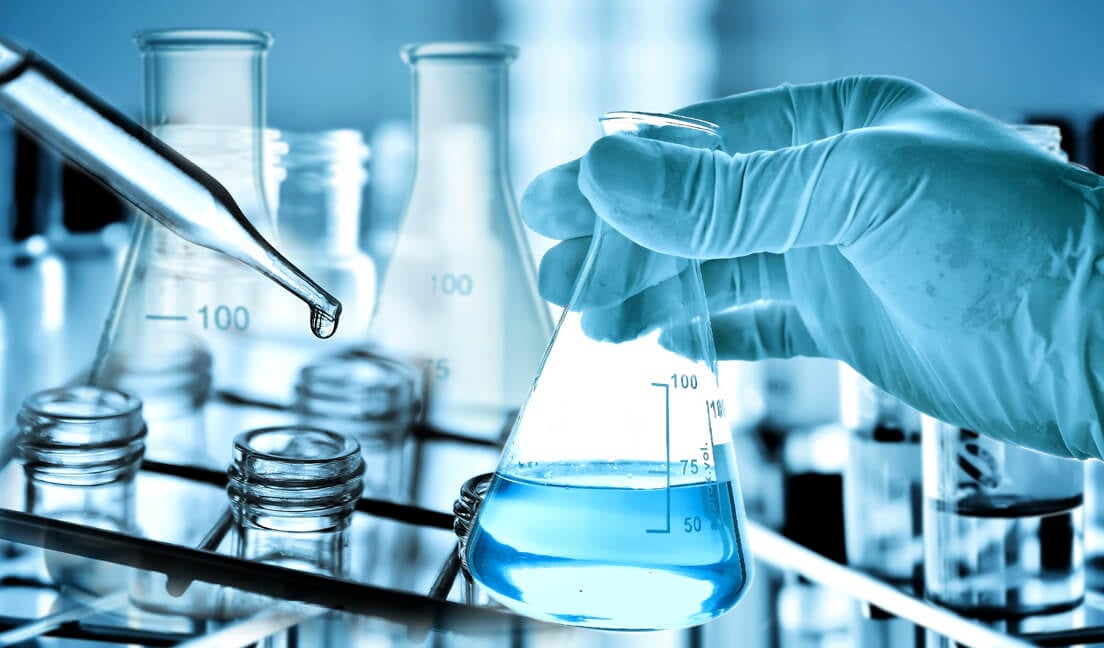
Total Organic Carbon (TOC) analysis measures the total amount of organic compounds in water. It has been used to determine water purification levels for decades in the pharmaceutical, semiconductor, and power generation industries, among many others.
Within laboratories, TOC analysis is primarily used to determine whether a solution meets the requirements for various applications and processes.
What is TOC?
TOC is the principal parameter when identifying the aggregate quantity of organic compounds present in water. Carbon materials typically come from natural organic matter or synthetic sources, such as materials and systems used for water purification.
TOC analysis can identify the sum of all organic compounds in a sample, as well as any changes in the organic content. Levels of TOC differ depending on the water type, which can be measured at different concentrations with a range of systems. However, TOC alone cannot provide all information, as carbon-containing compounds can be found in different forms and proportions.
It is estimated that 10% of TOC is comprised of colloids, namely humic acids, and minerals. Tiny molecules from the decomposition of organic matter make up 10-20% of TOC, while large particle TOC is referred to as particulate or non-dissolved (NDOC).
How do you measure TOC?
To measure TOC, organic compounds are typically oxidised so they can be quantified. The parameters for measurement are:
- Total Organic Carbon (TOC)
- Total Carbon (TC)
- Inorganic Carbon (IC)
- Purgeable Organic Carbon (POC)
- Non Purgeable Organic Carbon (NPOC)
TOC and TC are the main parameters used across different industries. TOC can also be used to measure Inorganic Carbon (IC) – carbon acid salts and dissolved carbon dioxide. IC must be subtracted to measure TOC, which involves acidifying the sample to release the IC as CO2, which is then measured to waste.
For water with very low conductivity, no IC correction is needed as it doesn’t contain enough concentrations of bicarbonates or carbonates.
TOC Analysis Methods
TOC analysis typically is performed in three stages: sampling, oxidation, and detection.
First, samples are introduced into an analyser which may use a flow-injection technique. Oxidation techniques include chemical oxidation, high temperature combustion and photocatalytic oxidation, chemical oxidation. TOC analysers use conductivity detectors and non-dispersive infrared (NDIR) for detection.
Methods for detection and oxidation differ depending on the nature, concentration, and requirements of TOC, including:
- High Temperature Combustion: Used for high concentrations of TOC, high temperature combustion takes place at 1,200 °C in an atmosphere with ample oxygen. The CO2 produced then passes through scrubber tubes. This process removes interferences, which are measured by non-dispersive infrared absorption (NDIR).
- Catalytic Oxidation: The temperature for catalytic oxidation should be at 680°C, in an environment with plenty of oxygen. This occurs inside tubes filled with a platinum catalyst and is measured by NDIR. This method is typically used for higher TOC concentrations and high levels of particles.
- Thermo-chemical oxidation: This method consists of bringing thermo-chemical oxidation together with heat and a chemical oxidizer, often a persulphate.
- Photo-chemical oxidation: This method combines photo-chemical oxidation with UV and a persulphate.
- Photo-oxidation: This method can be done with ultraviolet, UV light or with a catalyst. UV oxidation is often regarded as the most reliable and low-maintenance method of determining TOC in ultra-pure water.
Additionally, persulphate oxidation which has been enhanced by UV or heat, can be used for many types of water for laboratory TOC determination. This process can produce CO2, which is measured by an NDIR. When dissolved into pure water, it can also be measured by the change of conductivity.
Online TOC
Most TOC samples are analysed in a laboratory setting, with samples being prepared before analysis if sub-divisions of TOC are required. Despite the prevalence of laboratory TOC analysis, online measurements are necessary in measuring trace TOC levels below 50ppb.
Online measurements can prevent contamination caused by numerous factors, such as the environment, containers, or the carbon dioxide in the atmosphere, which often interferes with techniques used to monitor trace TOC. However, due to the tiny amounts of TOC, the water purity requirements need to be stringent.
TOC Monitoring
As the monitoring of low TOC levels in high purity water continues to evolve, the number of TOC monitors increases. For this reason, quick responses are essential in maintaining accurate and relevant results for small volumes of water. To do so, monitors tend to measure conductivity before and after oxidation.
TOC includes carbon from many different types of compounds; therefore, all TOC must be absent to meet high standards and requirements. It’s recommended to use built-in TOC monitoring for ultrahigh purity water. Although, it’s important to note that consistency and quality in analysis is just as critical as high purity levels.
